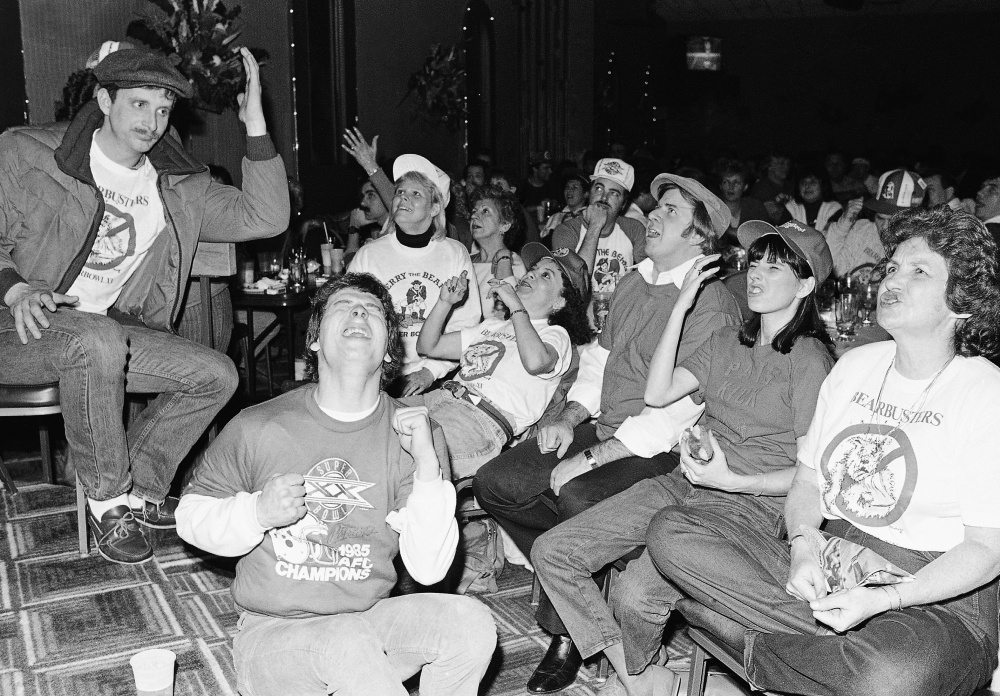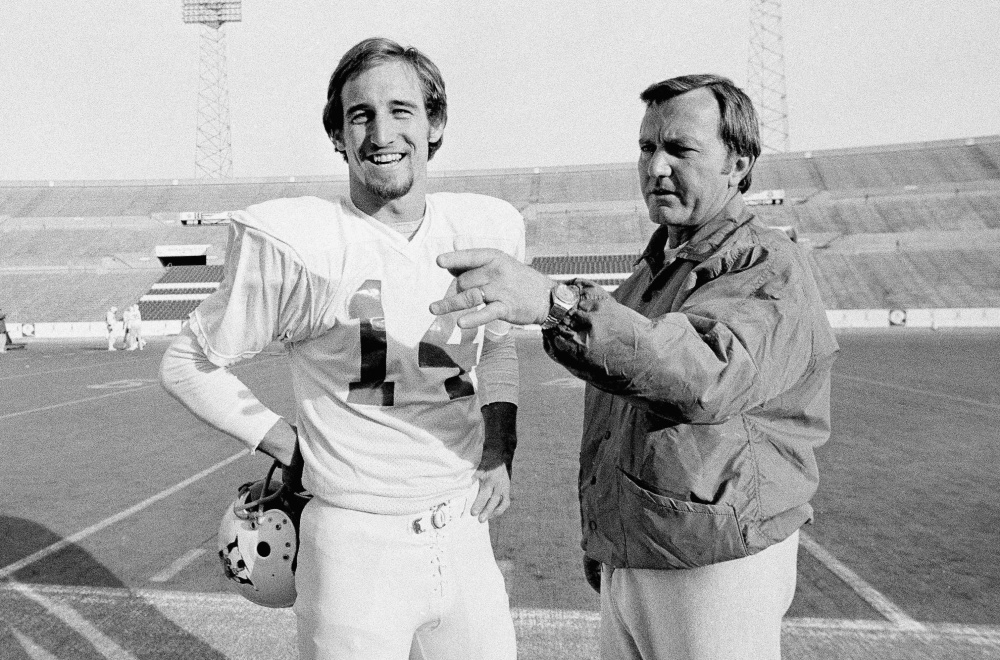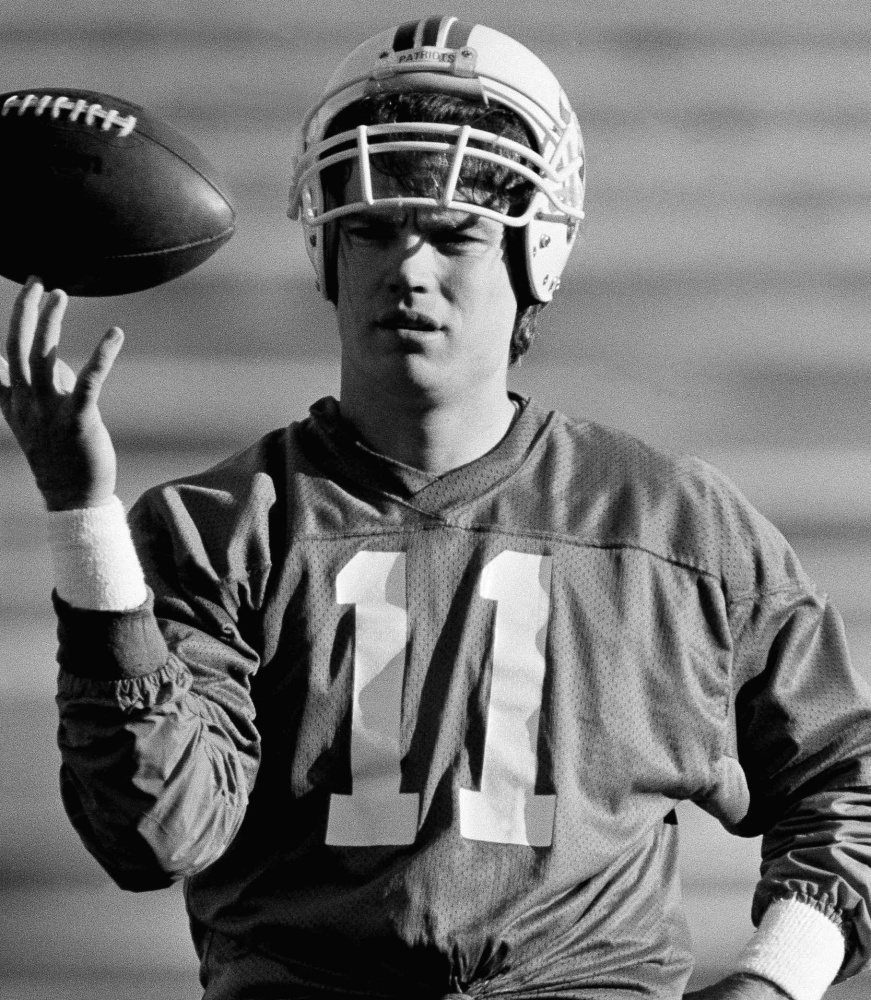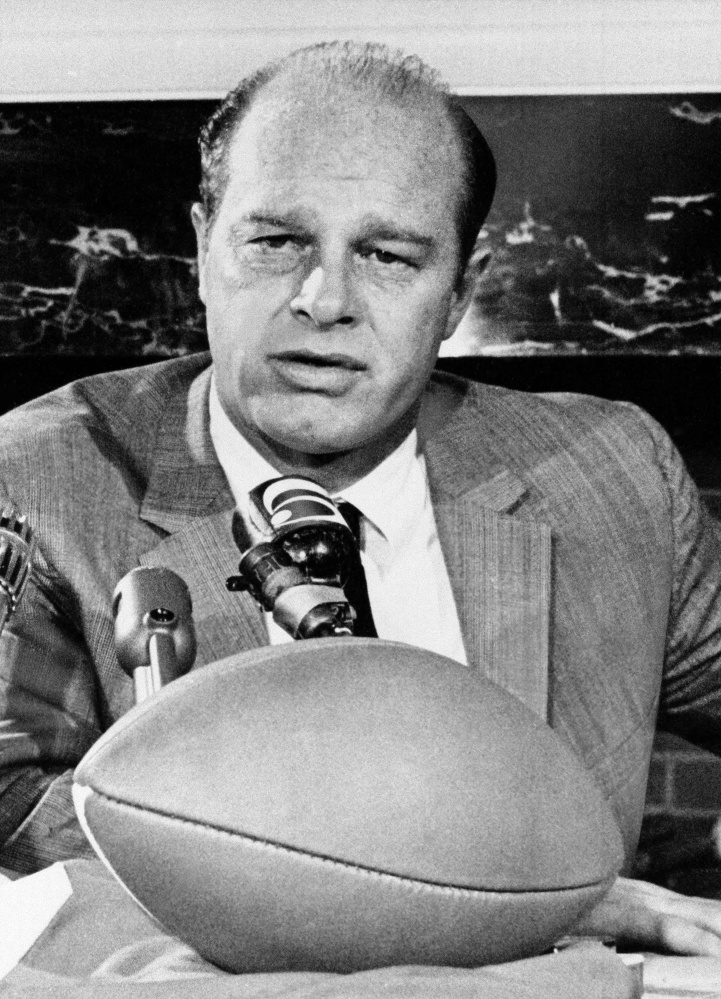This is a franchise that in no particular order chose a guy who couldn’t win at the University of Toledo over a Hall of Famer as its coach, nearly electrocuted that coach at a news conference, suspended another coach for taking a different job in-season, played 19 seasons before hosting a playoff game, played 26 before winning a playoff game, then reached the Super Bowl only as a means to sharpen the punchlines to an endless steam of jokes.
That was all before they reached rock bottom.
It’s a franchise that was going to move to Birmingham (maybe) or St. Louis (likely) or Hartford (definitely). It played in the NFL’s worst stadium and drew its worst crowds. In a sports-mad city playing what became America’s most popular sport, it ranked behind basketball, behind baseball, even behind hockey. And it wasn’t close.
And now an entire nation is sick of these guys?
As inevitable as the New England Patriots’ ninth appearance in the Super Bowl seems – particularly with seven of those AFC titles crammed into the past 16 seasons – such a stretch seemed absurdly far-fetched over the team’s first 30 years of existence. This wasn’t as much a Mickey Mouse operation as one that would have benefited greatly had Mickey himself been put in charge.
So let’s not let joyless Bill Belichick and autotron Tom Brady scrub the franchise of its inglorious, itinerant, haphazard and occasionally hysterical past. When the Patriots came into existence as a flagship member of the old American Football League in 1960, they played at Boston University. They played at Harvard. They played at Fenway Park, with both teams sharing one sideline. They played at Boston College, where there was once a fire in the stands.
And then things got bad.
Late in their first decade, owner Billy Sullivan was looking for a replacement for Mike Holovak as head coach. The New York Jets, with Clive Rush as their offensive coordinator, had just upset the Baltimore Colts, with Chuck Noll as their defensive coordinator, in Super Bowl III, 16-7. The story goes that Sullivan couldn’t justify hiring a losing assistant, so he went with Rush. Nice choice. Rush’s only head coach experience had been a three-year, 8-20 stint at Toledo. Crippling. The Steelers would be left with Noll.
The Patriots subsequently brought on another Jet, George Sauer Sr., as the general manager. At Sauer’s introductory news conference, Rush picked up the microphone – and immediately started wailing. What little hair he had stood on end. He was, in fact, being electrocuted. He should have put that jolt into New England’s offense. Instead, when someone finally unplugged the mic, Rush slumped to the floor.
Rush’s other notable contribution in a 21-game tenure was in reaction to his inability to sign the team’s top draft pick. He pulled an inactive player, running back Bob Gladieux, from the stands and inserted him for the opening kickoff. Gladieux had just sent a friend for hot dogs and drinks. Instead he made the game’s first tackle.
Eventually, Rush left the sideline during a game. Most Patriots fans couldn’t blame him. The team fired him seven games into his second season. Noll coached the Steelers for 23 years and won four Super Bowls. Flip of a coin.
This kind of fortune was woven into the franchise’s fabric. They were known as the Boston Patriots until the owners of a harness racing track 30 miles southwest of downtown donated land for a stadium. Had that not happened, the Patriots might have moved to Alabama (where they would have to have been called the Rebels, right?). The edifice built by the Sullivan family, who had owned the club since its birth, cost $7.1 million to construct. That’s roughly $43 million in today’s dollars – or $2 million more than Brady’s current two-year contract.
What Schaefer Stadium lacked in accoutrements, it made up for in extreme inconvenience and straight-backed metal bleachers. It was such a lousy venue that even though Anheuser-Busch owned the naming rights in the 1980s, the brewer preferred to rename the stadium after the Sullivans, lest association with the team and the field sully the good name of, say, Budweiser.
In the 1960s and ’70s, after nine straight seasons without a winning record, the Sullivans managed to find stability with Chuck Fairbanks as coach. In 1978, New England was in line to host a playoff game for the first time in franchise history, with only a “Monday Night Football” game in Miami left to close out the regular season. Before that game, though, Fairbanks told his team he was leaving to become the coach at the University of Colorado. Small detail: He hadn’t shared this information with Sullivan.
The owner’s solution: Suspend Fairbanks for the Miami game, and name Ron Erhardt and Hank Bullough as co-coaches. Each gave a separate pep talk before the Dolphins game. The Patriots lost, 23-3. Sullivan’s new solution: Reinstate Fairbanks for the playoff game against Houston. New England fell behind 21-0 at halftime and lost 31-14. Mayhem.
So with Larry Bird’s Celtics and Carl Yastrzemski’s Red Sox and Ray Bourque’s Bruins to compete with, the Patriots annually risked being an afterthought. Even when the team finally won a playoff game, it could scarcely stay out of its own way. After beating the Jets and Raiders on the road to reach the 1985 AFC title game in Miami, Irving Fryar – the top overall pick in the previous year’s draft – said he had injured his hand in a mishap with a kitchen knife. Turns out the mishap involved an altercation with his wife. The Patriots sent Fryar home, advanced to the Super Bowl anyway, and were blown out by the Chicago Bears.
The Patriots somehow turned that achievement into a hallmark for ineptness. New England quarterback Steve Grogan was sacked four times and threw two interceptions. Co-quarterback Tony Eason went 0 of 6, was sacked three times and fumbled once. The Patriots rushed for 7 yards. Final: Bears 46, Patriots 10. It wasn’t that close.
Yet in a way, that Super Bowl appearance went more smoothly than the next one, 11 years later, when Coach Bill Parcells arrived with his team, coached in a loss to the Green Bay Packers and left on a different plane, never intending to coach the Patriots again. He wound up with the rival Jets instead.
It never seemed to stop. One first-round draft pick, running back Robert Edwards, shredded his knee – in a flag football game on the beach in Hawaii. Even the worst season in team history, a 1-15 mark in 1990 under one-year head coach Rod Rust, is remembered more for the fact that tight end Zeke Mowatt and other players sexually harassed a female beat writer for the Boston Herald.
That had to be the nadir. Except wait a couple days: The owner, shaving mogul Victor Kiam, made jokes about the incident at a public appearance. The guy Kiam sold the team to, James Orthwein, always seemed to want to move to his native St. Louis. Even as recently as 1998, the Patriots were so unstable and unpredictable that Robert Kraft, the current owner, signed a deal to move the team to Connecticut.
Yet in typical Patriots fashion, that deal fell apart. What didn’t?
This is the franchise that has one losing season in its past 21. This is the franchise that has won 13 of the past 14 division titles – and the year it missed the playoffs went 11-5. This is the franchise that is now seen as a model.
The message: Have faith, Cleveland fans. Anything’s possible.
Copy the Story LinkSend questions/comments to the editors.







Success. Please wait for the page to reload. If the page does not reload within 5 seconds, please refresh the page.
Enter your email and password to access comments.
Hi, to comment on stories you must . This profile is in addition to your subscription and website login.
Already have a commenting profile? .
Invalid username/password.
Please check your email to confirm and complete your registration.
Only subscribers are eligible to post comments. Please subscribe or login first for digital access. Here’s why.
Use the form below to reset your password. When you've submitted your account email, we will send an email with a reset code.